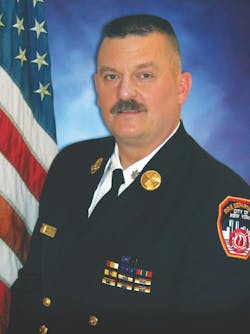There are more than just a few different types of hose loads that are used on engine companies throughout the United States, and they all work. The problem is that they don’t all work for every situation or operation. For that reason, engine companies must study and evaluate what type of hose load best suits their needs. Among the questions that must be asked: How much hose is carried? What types of structures are protected in the response district? Are hydrants in any or all of the protection areas? What is typical staffing? The answers to all of these questions will have an effect on the decision concerning how hoselines will be packed, carried and deployed.
For the purposes of this discussion, the differences between the preconnected attack hoseline and the static (aka dead load) are covered.
Preconnects
The preconnected attack hoseline certainly is quite versatile, but it has its limitations.
The most popular feature of a preconnect is that it already is connected to the pump and is ready to go to work as soon as it’s in position, which is good. However, what if the three-length line, which is 150 feet, is pulled, and it comes up short? Someone who is on scene must add a length or more to even reach the fire. This certainly delays getting water on the fire and slows down the entire operation. If there aren’t hydrants, a supply line or other supply operation is required, which necessitates more staffing and probably more companies. If there are hydrants, a supply line must be laid into the fire or hand-stretched to the nearest hydrant, because the engine apparatus must be at the fire scene because of the limited length of the hoseline.
Static load
The static load simply is a hose compartment that contains a specific amount of hose that isn’t connected to the pump.
When used as an attack hoseline, the hose complement often consists of a number of lengths of 2½-inch hose with fewer lengths of 1¾- or 1½-inch hose on top with a nozzle attached. The 2½-inch hose could number 10 or even 15 lengths; the smaller attack hose usually is constrained to about 6 lengths to limit friction loss.
The great benefit of this hose load is the 20 or more lengths of hose that are available for the stretch.
This pumper also can establish a reliable water supply in several ways. First option: A supply line can be laid into the fire and positioned on scene for a rapid hose stretch. Second option: The pumper can stop initially at the fire scene for the attack hose line to be stretched, and when the required number of lengths is removed, the apparatus can proceed forward to the hydrant or other water supply.
Primary flexibility
If you think about it, it might make sense to have both of these hose loads on the first-in engine. The problem: Many departments go all in with preconnects and limit their operational options at structural fires. The more options that members have to choose from, and the more different types of occupancies and types of building construction that are in a response area, and the more staffing might vary from shift to shift or day to night, the better a static hose load might serve you.
Like the decadeslong debate about smooth bore nozzles versus adjustable fog straight stream nozzles, there’s no specific correct answer. Departments must prepare, train and equip to handle as many variables as possible. You certainly can’t have one of every different hose load that exists, but you can and should have enough flexibility to get that important primary attack hoseline in operation rapidly and effectively.

John J. Salka Jr. | Battalion Chief
JOHN J. SALKA JR., who is a Firehouse contributing editor, retired as a battalion chief with FDNY, serving as commander of the 18th battalion in the Bronx. Salka has instructed at several FDNY training programs, including the department’s Probationary Firefighters School, Captains Management Program and Battalion Chiefs Command Course. He conducts training programs at national and local conferences and has been recognized for his firefighter survival course, “Get Out Alive.” Salka co-authored the FDNY Engine Company Operations manual and wrote the book "First In, Last Out–Leadership Lessons From the New York Fire Department." He also operates Fire Command Training, which is a New York-based fire service training and consulting firm.






